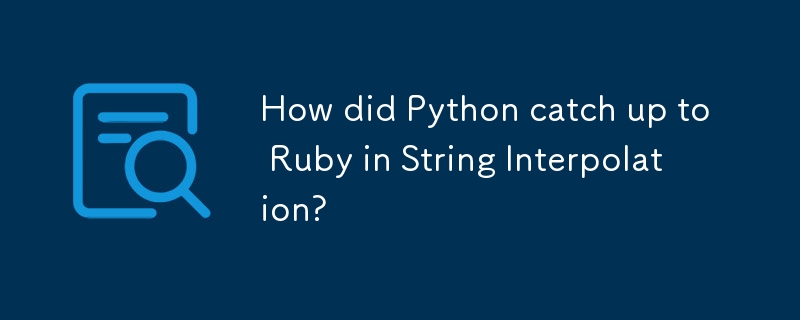
Python의 문자열 보간 접근 방식
Ruby는 문자열 보간을 수행하는 편리한 방법을 제공하지만 Python에는 처음에는 유사한 메커니즘이 부족했습니다. 그러나 Python 3.6에서는 리터럴 문자열 보간이 도입되어 Ruby의 접근 방식에 맞춰 조정되었습니다.
예:
name = "Spongebob Squarepants"
print(f"Who lives in a Pineapple under the sea? {name}.")Options Pre-Python 3.6
Python 3.6 이전에는 Python에서 문자열 보간에 대한 대안을 제공했습니다.
name = "Spongebob Squarepants"
print("Who lives in a Pineapple under the sea? %(name)s." % locals())name = "Spongebob Squarepants"
print("Who lives in a Pineapple under the sea? {name!s}.".format(**locals()))tmpl = string.Template("Who lives in a Pineapple under the sea? $name.")
print(tmpl.substitute(name="Spongebob Squarepants"))결론적으로 Python 3.6은 문자열 보간을 위한 간결하고 Ruby와 유사한 방법을 제공하는 반면, 이전 Python 버전은 다양한 대체 접근 방식을 제공합니다. 비슷한 결과를 얻으려면.
위 내용은 Python은 문자열 보간에서 어떻게 Ruby를 따라잡았나요?의 상세 내용입니다. 자세한 내용은 PHP 중국어 웹사이트의 기타 관련 기사를 참조하세요!